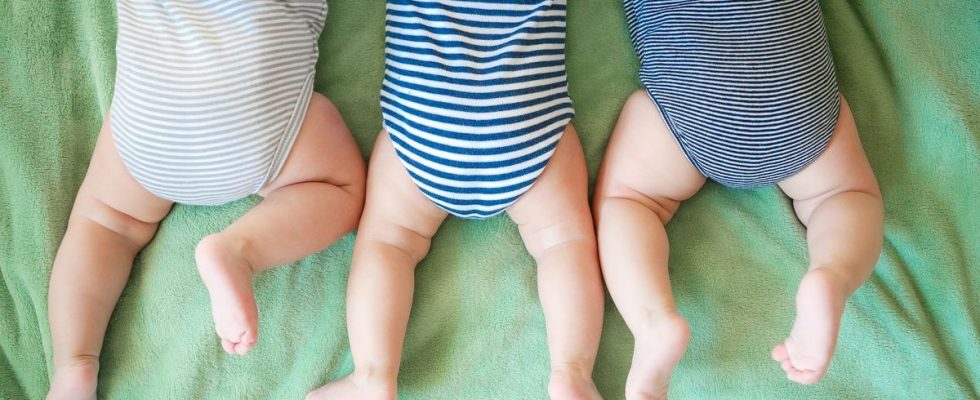Published on
Updated
Reading 3 min.
in collaboration with
Dr Odile Bagot (Gynecologist-obstetrician)
While she was pregnant with her first child, a young American woman had the surprise of her life during a visit to the emergency room: she no longer had one embryo, but three, after having become pregnant a second time at a week apart. A phenomenon called superfetation, extremely rare… but possible.
In January 2021, Deonna Fletcher, a 26-year-old American woman, gave birth to three little girls. Triplets? Yes, but with a little subtlety: she was already carrying her first baby when she became pregnant again with the twins. A phenomenon of extremely rare superfetation that she revealed in a TikTok post on October 13.
Two fertilizations 6 days apart
“We planned to have a baby and I got pregnant. I had an ultrasound – there was a baby. So I said to myself, “It’s okay if we continue to be careless now (without protection). I literally said that.” The future would decide otherwise.
A week later, Deonna suffered severe pain in her lower abdomen and went to the emergency room, fearing a miscarriage. A new ultrasound is performed and there, surprise!
“I found out I was in so much pain because my uterus was growing so fast because there were two other babies.”
Shocked, the two parents ask for explanations: how is this possible? They are then told that this can happen when a woman experiences two consecutive menstrual cycles, each resulting in pregnancy.
Six months later, the young mother is bedridden to complete her double pregnancy and the three little girls, Dream, Amani and Amber, were born on the same day, in January 2021, and are in perfect health. Although the three girls are not exactly the same age, the parents consider them to be perfect triplets.
Superfetation, an extremely rare but astonishing phenomenon
Getting pregnant twice during the same pregnancy is therefore possible and is referred to as follows:
“Superfetation is the fact of having two fertilizations in a staggered manner with two fetuses which do not have the same term, there is one younger and one older, explained in our pages Doctor Olivier Pirrello, head of the Gynecology-obstetrics department at Strasbourg University Hospital in a previous case.
“It is quite common in the animal world, reveals Dr Odile Bagot, gynecologist and member of our committee of experts. MBut it’s extremely rare in the human species, I’ve never seen one in my career!”
But what are the possible causes of this double gestation? In Deonna’s case, the hospital cited an irregular cycle as the cause of double ovulation. For Dr Bagot, several hypotheses can explain this phenomenon:
“We think that most often it is one pregnancy that has started and exceptionally, a second has also occurred spontaneously. In another scenario, this could happen in a PMA process, when an embryo has been implanted, while a pregnancy was just beginning. Finally we can think of a uterine malformation or a genetic cause, but the cases being very rare, it is difficult to really know why it happens!”
The term, on the other hand, is not very different from a “classic” birth. “Both babies each develop at their own pace. But childbirth is often premature, and more for one than the other, therefore. It is still very rare that the birth is delayed, it often takes place at the same time for the two (or three) babies.
But whether it surprises you, or frightens you, this phenomenon remains a rarity which should not worry you. “This is perfectly exceptional, and you should not fear that. It happens, but it won’t be for you.”
According to the figures, only 10 cases of superfetation in the world have been recorded. Science estimates that this affects one in a billion medical anomalies.
